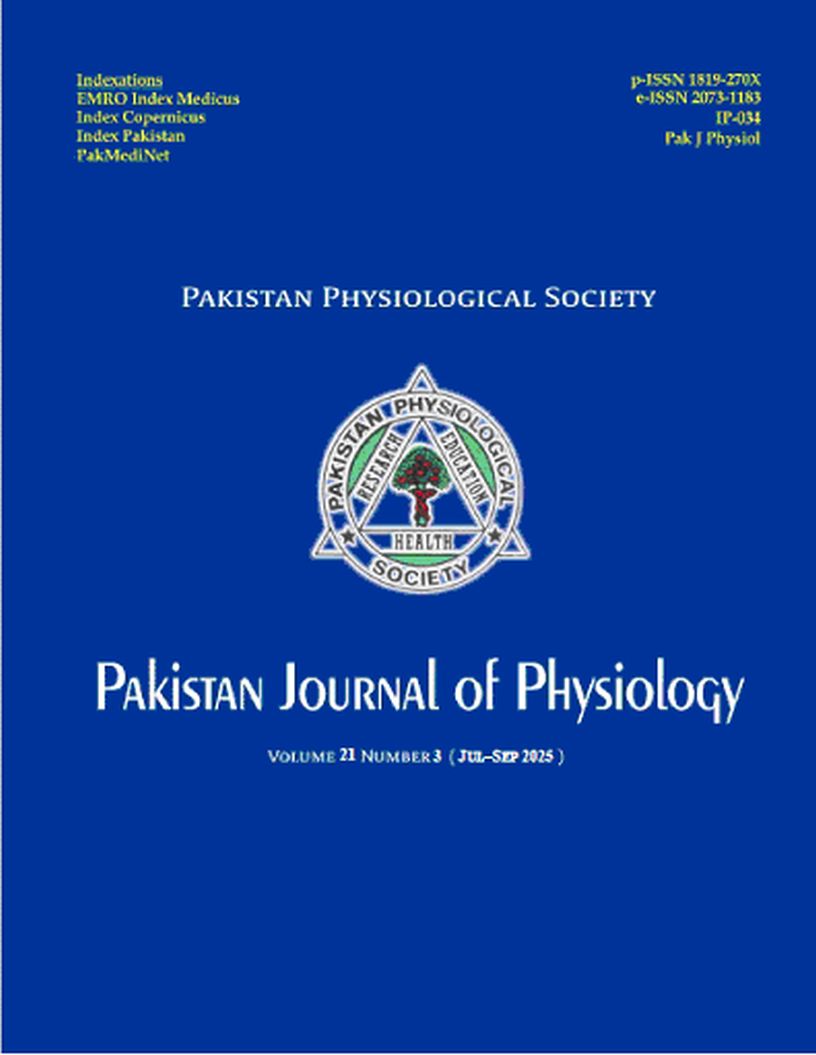EFFICACY OF SLOW INFUSION OF ADENOSINE VERSUS VERAPAMIL IN THE TREATMENT OF SUPRAVENTRICULAR TACHYCARDIA
DOI:
https://doi.org/10.69656/pjp.v21i3.1835Keywords:
Adenosine, Pakistan, Supraventricular tachycardia, VerapamilAbstract
Background: Supraventricular tachycardia (SVT) is a critical cardiac emergency necessitating medical intervention. The comparative efficacy and safety profiles of adenosine and verapamil in Pakistani population have not been extensively studied. This study aims to compare the efficacy of slow infusion adenosine versus verapamil in the treatment of SVT in Pakistani patients. Methods: A prospective experimental study was conducted involving 100 patients with SVT at a tertiary care hospital in Pakistan. Patients were randomly assigned to receive either a slow infusion of adenosine (n=50, initial dose 6 mg followed by 12 mg if needed) or verapamil (n=50, 1 mg/min up to 20 mg) after the initial Valsalva manoeuvre. The primary outcome was successful termination of SVT. Secondary outcomes included haemodynamic changes and adverse effects. Results: The mean age was comparable between groups (adenosine: 52.02±12.19 years, verapamil: 51.98±13.90 years). Verapamil proved superior efficacy with a 100% conversion rate compared to 90% with adenosine (p=0.02). Both groups showed similar haemodynamic stability, with no significant differences in post-conversion systolic blood pressure, (verapamil: 123.70±22.35 mmHg vs adenosine: 122.14±15.79 mmHg, p=0.68) and diastolic blood pressures. The adenosine group reported higher rates of apprehension (62.9%) and ECG events (63.2%), while both groups showed comparable incidences of other side-effects. Conclusion: Verapamil showed higher conversion success compared to adenosine in treating SVT and maintained a favourable safety profile. Verapamil is an effective alternative to adenosine in the management of SVT.
Pak J Physiol 2025;21(3):26–9, DOI: https://doi.org/10.69656/pjp.v21i3.1835
Downloads
References
Patti L, Ashurst JV. Supraventricular Tachycardia. [Updated 2023 Aug 7]. In: StatPearls [Internet]. Treasure Island (FL): StatPearls Publishing; 2025.
Hafeez Y, Quintanilla Rodriguez BS, Ahmed I. Paroxysmal Supraventricular Tachycardia. [Updated 2024 Feb 28]. In: StatPearls [Internet]. Treasure Island (FL): StatPearls Publishing; 2025 Jan.
Yetkin E, Ozturk S, Cuglan B, Turhan H. Clinical presentation of paroxysmal supraventricular tachycardia: evaluation of usual and unusual symptoms. Cardiovasc Endocrinol Metab 2020;9(4):153–8.
Ashraf H, Fatima T, Ashraf I, Majeed S. Effectiveness of modified Valsalva maneuver by using wide bore syringe for emergency treatment of supraventricular tachycardias: Findings from Pakistan. Pak J Med Sci 2023;39(3):693–7.
Escudero CA, Tan RBM, Beach CM, Dalal AS, LaPage MJ, Hill AC. Approach to Wide Complex Tachycardia in Paediatric Patients. CJC Pediatr Congenit Heart Dis 2022;1(2):60–73.
Kotadia ID, Williams SE, O’Neill M. Supraventricular tachycardia: An overview of diagnosis and management. Clin Med (Lond) 2020;20(1):43–7.
Ahmad F, Abu Sneineh M, Patel RS, Reddy RS, Llukmani A, Hashim A, et al. In the line of treatment: a systematic review of paroxysmal supraventricular tachycardia. Cureus 2021;13(6):e15502.
Shaker H, Jahanian F, Fathi M, Zare M. Oral verapamil in paroxysmal supraventricular tachycardia recurrence control: a randomized clinical trial. Ther Adv Cardiovasc Dis 2015;9(1):4–9.
Lim SH, Anantharaman V, Teo WS, Chan YH. Slow infusion of calcium channel blockers compared with intravenous adenosine in the emergency treatment of supraventricular tachycardia. Resuscitation 2009;80(5):523–8.
Riaz R, Mishra J, Hussain S, Sinha LM. Adenosine versus verapamil for the treatment of supra-ventricular tachycardia: Randomized comparative trail. Pak J Med Health Sci 2012;6(3):541–3.
Antman EM. (Ed). Cardiovascular Therapeutics E-Book: A Companion to Braunwald’s heart disease. Elsevier Health Sciences; 2012.
Asghar N, Ahmad S, Rehman AU. Emergency treatment of SVT: Adenosine versus Verapamil. J Univ Med Dent Coll 2017.3;8(1):39–43.
Godfraind T. Discovery and development of calcium channel blockers. Front Pharmacol 2017;8:286.
Arnett DK, Blumenthal RS, Albert MA, Buroker AB, Goldberger ZD, Hahn EJ, et al. 2019 ACC/AHA Guideline on the Primary Prevention of Cardiovascular Disease: A report of the American College of Cardiology/American Heart Association Task Force on Clinical Practice Guidelines. Circulation 2019;140(11):e649–50.
Gupta A, Lokhandwala Y, Rai N, Malviya A. Adenosine—A drug with myriad utility in the diagnosis and treatment of arrhythmias. J Arrhythm 2021;37:103–12.
Feng, X., Liu, J. Efficacy and safety of adenosine for supraventricular tachycardia: A meta-analysis utilizing BioMedGPT-LM-7B. BMC Cardiovasc Disord 2025;25(1)158.
Delaney B, Loy J, Kelly AM. The relative efficacy of adenosine versus verapamil for the treatment of stable paroxysmal supraventricular tachycardia in adults: a meta-analysis. Eur J Emerg Med 2011;18(3):148–52.
Marco CA, Cardinale JF. Safety and efficacy of adenosine for the treatment of supraventricular tachycardia in the emergency department. Ann Emerg Med1994;23(3):73, 628.
World Health Organization. WHO Essential Medicines. 23rd List. 2023. Geneva: World Health Organization; 2023. Available from: https://www.who.int/publications/i/item/essential-medicines-list [Accessed 22 Nov 2024].
Downloads
Published
How to Cite
Issue
Section
License
Copyright (c) 2025 Ifra Ashraf, Hira Ashraf, Nilofar Nasir, Shazadi Ambreen

This work is licensed under a Creative Commons Attribution-NoDerivatives 4.0 International License.
The author(s) retain the copyrights and allow their publication in Pakistan Journal of Physiology, Pak J Physiol, PJP to be FREE for research and academic purposes. It can be downloaded and stored, printed, presented, projected, cited and quoted with full reference of, and acknowledgement to the author(s) and the PJP. The contents are published with an international CC-BY-ND-4.0 License.











